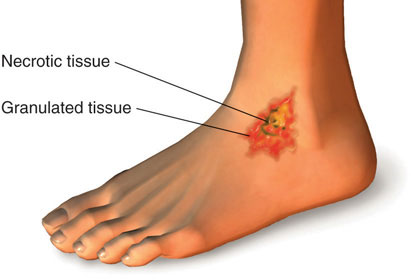2.2 – Why is Nutrition Important to Health?
Learning Objective
- Explain why nutrition is important to health
Almost one hundred years later, nutritionist Victor Lindlahr wrote in an ad in 1923, “Ninety percent of the diseases known to man are caused by cheap foodstuffs. You are what you eat.” Today, we know this phrase simply as, “You are what you eat.”
 Figure 2.2.1: PSU Field Hockey
Figure 2.2.1: PSU Field Hockey
“Duke 2010 (47)” by gobluecsa is licensed under CC BY-SA 2.0
Good nutrition equates to receiving enough (but not too much) of the macronutrients (proteins, carbohydrates, fats, and water) and micronutrients (vitamins and minerals) so that the body can stay healthy, grow properly, and work effectively. The phrase “you are what you eat” refers to the fact that your body will respond to the food it receives, either good or bad. Processed, sugary, high-fat, and excessively salted foods leave the body tired and unable to perform effectively. By contrast, eating fresh, natural whole foods fuels the body by providing what it needs to produce energy, promote metabolic activity, prevent micronutrient deficiencies, ward off chronic disease, and promote a sense of overall health and well-being.
Table: 2.2.1 Why Nutrition is Important to Health
| Protein | Necessary for tissue formation, cell reparation, and hormone and enzyme production. It is essential for building strong muscles and a healthy immune system. |
|---|---|
| Carbohydrates | Provide a ready source of energy for the body and provide structural constituents for the formation of cells. |
| Fat | Provides stored energy for the body, functions as structural components of cells and also as signaling molecules for proper cellular communication. It provides insulation to vital organs and works to maintain body temperature. |
| Vitamins | Regulate body processes and promote normal body-system functions |
| Minerals | Regulate body processes, are necessary for proper cellular function, and comprise body tissue. |
| Water | Transports essential nutrients to all body parts, transports waste products for disposal, and aids with body temperature maintenance |
Undernutrition, Overnutrition, and Malnutrition
For many, the word “malnutrition” produces an image of a child in a third-world country with a bloated belly, and skinny arms and legs. However, this image alone is not an accurate representation of the state of malnutrition. For example, someone who is 150 pounds overweight can also be malnourished. Malnutrition refers to one not receiving proper nutrition and does not distinguish between the consequences of too many nutrients or the lack of nutrients, both of which impair overall health. Undernutrition is characterized by a lack of nutrients and insufficient energy supply, whereas overnutrition is characterized by excessive nutrient and energy intake. Overnutrition can result in obesity, a growing global health threat. Obesity is defined as a metabolic disorder that leads to an overaccumulation of fat tissue.
Although not as prevalent in America as it is in developing countries, undernutrition is not uncommon and affects many subpopulations, including the elderly, those with certain diseases, and those in poverty. Many people who live with diseases either have no appetite or may not be able to digest food properly. Some medical causes of malnutrition include cancer, inflammatory bowel syndrome, AIDS, Alzheimer’s disease, illnesses or conditions that cause chronic pain, psychiatric illnesses, such as anorexia nervosa, or as a result of side effects from medications.
Overnutrition is an epidemic in the United States and is known to be a risk factor for many diseases, including Type 2 diabetes, cardiovascular disease, inflammatory disorders (such as rheumatoid arthritis), and cancer.
Growth and Development
From birth to adulthood, nutrients fuel the proper growth and function of all body cells, tissue, and systems. Without proper amounts of nutrients, growth and development are stunted. Some nutrient deficiencies manifest right away, but sometimes the effects of undernutrition aren’t seen until later in life. For example, if children do not consume proper amounts of calcium and vitamin D, peak bone mass will be reduced compared to what it would be had adequate amounts of these nutrients been consumed. When adults enter old age without adequate bone mass, they are more susceptible to osteoporosis, putting them at risk for bone fractures. Therefore, it is vital to building bone strength through proper nutrition during youth because it cannot be done in later life.1
1 Harvard T.H. Chan: The Nutrition Source Accessed January 26, 2021

Figure 2.2.2: Three generations
“aidan007” by Chris and Jenni is licensed under CC BY-NC-ND 2.0
The Healing Process
With all wounds, from a paper cut to major surgery, the body must heal itself. Healing is facilitated through proper nutrition1, while malnutrition inhibits and complicates this vital process. The following nutrients are important for proper healing:

Figure 2.2.3: Healing, a critical function of a healthy body, is facilitated by adequate nutrition.
Vitamin A. Helps to enable the epithelial tissue (the thin outer layer of the body and the lining that protects your organs) and bone cells to form.
Vitamin C. Helps form collagen, an important protein in many body tissues.
Protein. Facilitates tissue formation.
Fats. Play a key role in the formation and function of cell membranes.
Carbohydrates. Fuel cellular activity, supplying needed energy to support the inflammatory response that promotes healing.
Now that we have discussed the importance of proper nutrition for your body to perform normal tissue growth, repair, and maintenance, we will discuss ways of achieving a healthy diet.
Key Takeaways
- Nutrition promotes vitality and an overall sense of health and well-being by providing the body with energy and nutrients that fuel growth, healing, and all body systems and functions. Good nutrition will also help to ward off the development of chronic diseases.
- A person is malnourished by being either undernourished or overnourished. Malnutrition results when the body does not receive the required amounts of calories, fats, proteins, carbohydrates, vitamins, and minerals necessary to keep the body and its systems in good functioning order.
Discussion Starter
Do you notice how you feel after eating certain types of foods? How might this relate to your overall health?

